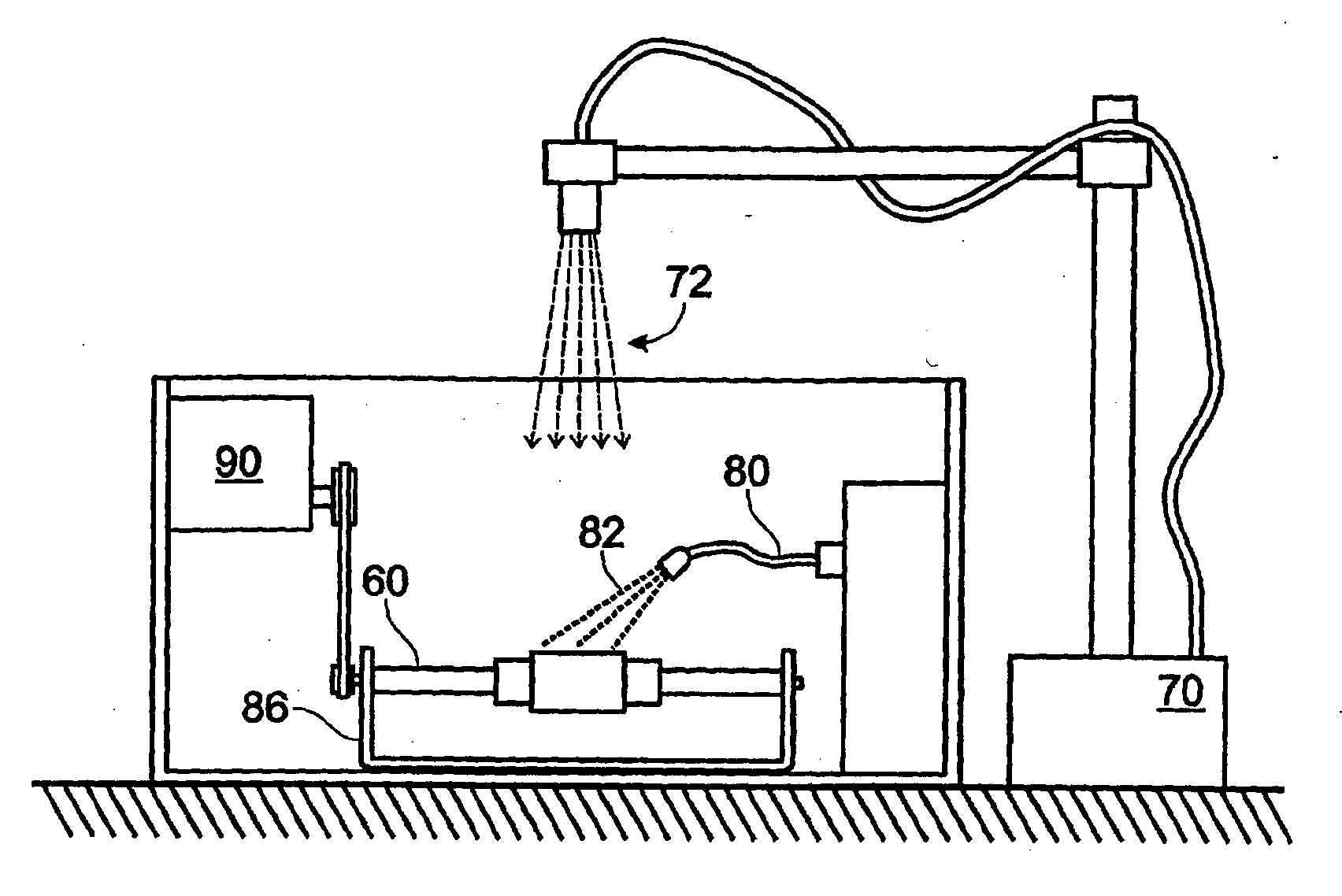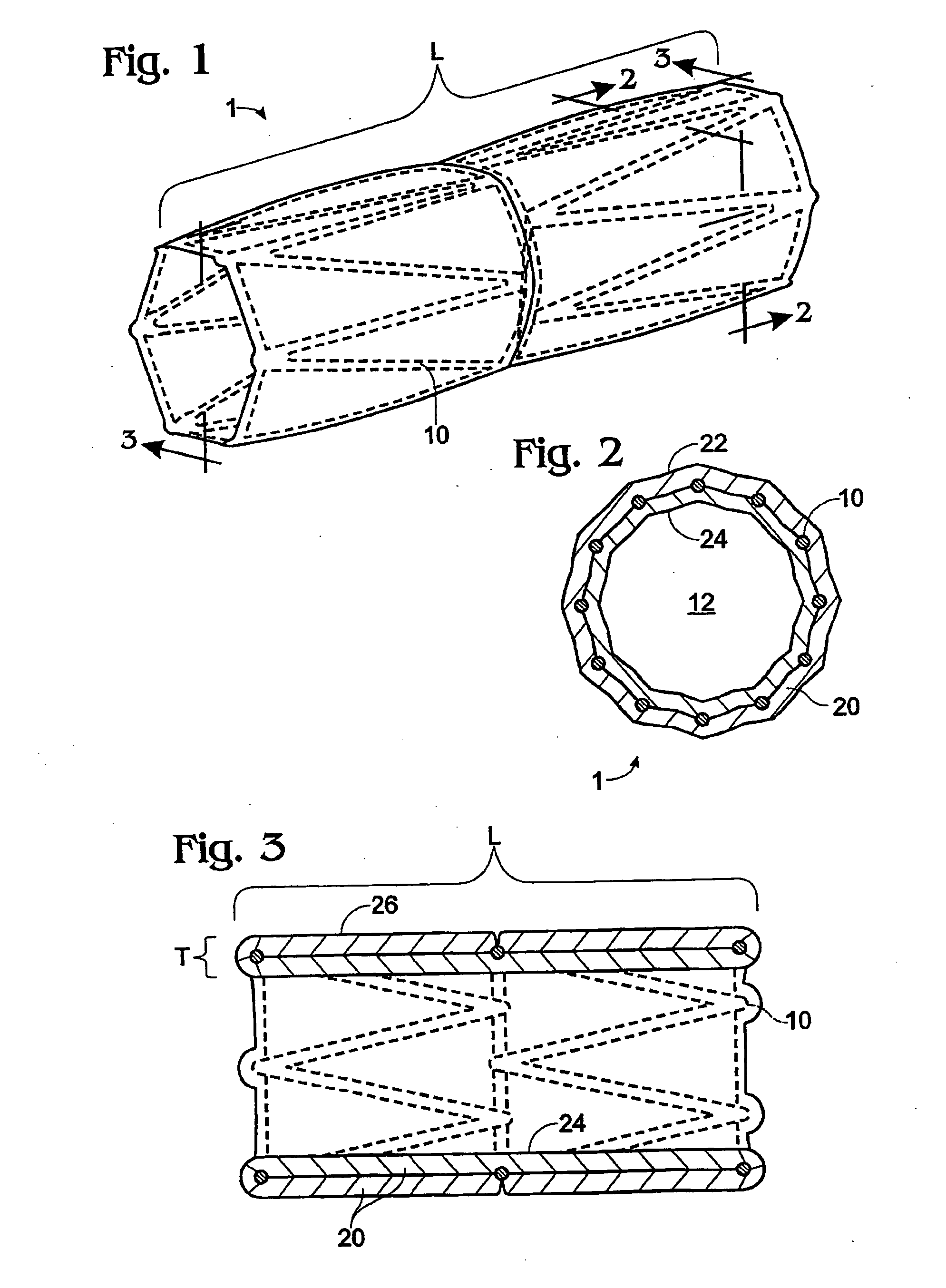Automated manufacturing device and method for biomaterial fusion
- Summary
- Abstract
- Description
- Claims
- Application Information
AI Technical Summary
Problems solved by technology
Method used
Image
Examples
Embodiment Construction
)
[0024] Implantable stents and grafts are disclosed in Applicant's U.S. Ser. No. 10 / 104,391. The stent graft 1 therein comprises a typically cylindrical stent frame 10 having a length L and defining a lumen 12. The stent graft further has a sheath of biomaterial 20 suturelessly attached to and substantially covering the stent frame.
[0025] The stent frame 10 preferably is constructed of a fine-gauge metal (e.g., 0.014 inch diameter) of a flexible character. Such frame enables the stent graft to be expanded or compressed in diameter or length.
[0026] The stent frame is covered with a biomaterial sheath 20 having a selected thickness T. The biomaterial sheath can comprise a single layer, a single layer with a partial overlap, or a plurality of layers (single or multiple sheets) coupled to the supporting stent frame. The sheath of biomaterial preferably comprises both the inner stent graft surface 24 and the outer stent graft surface 26.
[0027] If the biomaterial sheath is constructed ...
PUM
| Property | Measurement | Unit |
|---|---|---|
| Wavelength | aaaaa | aaaaa |
| Length | aaaaa | aaaaa |
| Length | aaaaa | aaaaa |
Abstract
Description
Claims
Application Information
 Login to View More
Login to View More - R&D
- Intellectual Property
- Life Sciences
- Materials
- Tech Scout
- Unparalleled Data Quality
- Higher Quality Content
- 60% Fewer Hallucinations
Browse by: Latest US Patents, China's latest patents, Technical Efficacy Thesaurus, Application Domain, Technology Topic, Popular Technical Reports.
© 2025 PatSnap. All rights reserved.Legal|Privacy policy|Modern Slavery Act Transparency Statement|Sitemap|About US| Contact US: help@patsnap.com



